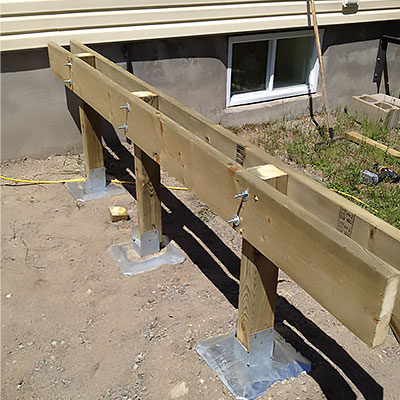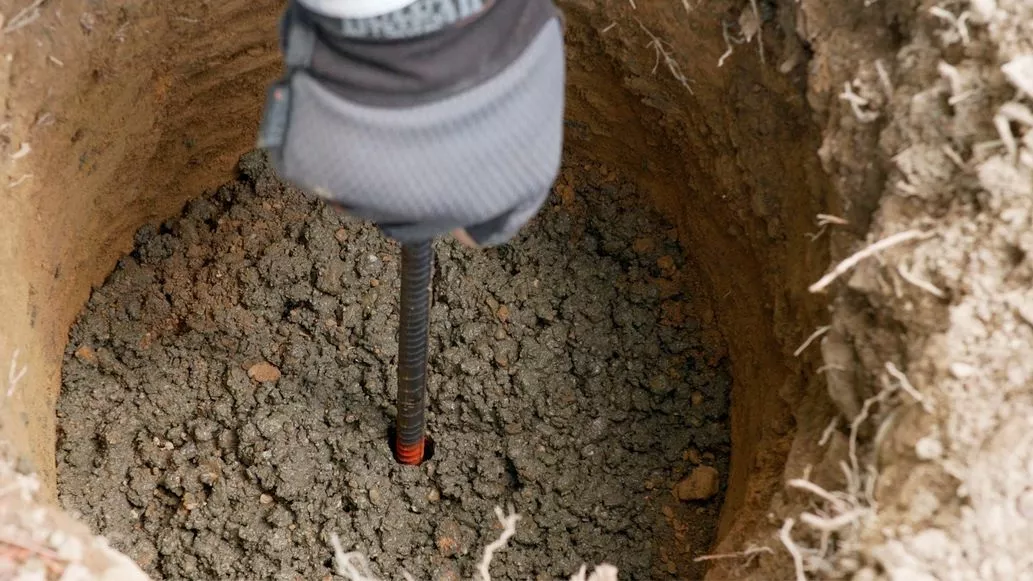Deck Footings Demystified: Your Blueprint for a Safe, Resilient Outdoor Place
Deck Footings Demystified: Your Blueprint for a Safe, Resilient Outdoor Place
Blog Article
Professional Tips for Installing Deck Footings to Support Your Outdoor Area
When it comes to building a deck, one of the most crucial components to consider is the setup of correct grounds. These footings are the foundation upon which your exterior area will relax, supplying security and support for years to come. What specifically does it take to mount deck grounds properly?
Relevance of Proper Deck Footings
Appropriate deck footings are necessary for guaranteeing the stability and durability of your exterior space. Without strong and effectively set up footings, your deck may end up being unstable, leading to safety hazards and expensive repair work.

Along with security, appropriate deck footings also add to the long life of your outside room (Deck Footings). Footings that are made and built to stand up to the elements and soil problems in your area will aid avoid the deck from moving or clearing up gradually. By making sure the footings are correctly sized and installed, you can reduce the threat of damage to the deck structure, extending its life expectancy and reducing the need for expensive repair services or replacements

Picking the Right Sort Of Grounds
When picking the suitable kind of footings for your deck, it is very important to take into consideration factors such as dirt problems, local building ordinance, and the total layout of your exterior space. The type of footing you select will play an essential function in making sure the stability and long life of your deck.
One common kind of ground is the concrete footing. Concrete grounds are appropriate for the majority of soil conditions and give superb support for decks. They are commonly installed below the frost line to avoid shifting and working out because of freezing and thawing cycles. Another option is helical piers, which are perfect for areas with unsteady soil or high water tables. These piers are screwed into the ground and supply solid assistance for the deck.
In many cases, you might need to use specific grounds, such as stack grounds or deep foundations, if you are developing a large or multi-level deck. These footings are created to disperse the weight of the deck over a bigger area, ensuring security and preventing sinking or working out.
Before selecting a kind of footing, it is vital to speak with local building codes and guidelines to guarantee conformity. Furthermore, think about the style and meant usage of your outdoor space. Aspects such as the size, shape, and load-bearing demands of your deck will influence the type of footing that is most appropriate.
Preparing the Ground for Footing Installation
To properly prepare the ground for footing installation, it is necessary to analyze the dirt conditions and take necessary steps to ensure security and resilience of the deck. The very first action is to dig deep into the location where the footings will be mounted. The deepness of the excavation will certainly depend on the frost line in your area and the particular demands of the deck design. It is necessary to remove any kind of greenery, rocks, or debris from the excavation to make certain a solid structure.
As soon as the location has been excavated, the next action is to compact the dirt. This can be done using a plate you can find out more compactor or by using a hand tamper. Condensing the dirt helps to remove any kind of voids or air pockets, which can cause clearing up and instability gradually.
After compacting the soil, it is very important to lay a layer of crushed rock or smashed rock at the end of the excavation. This will give drainage and help to avoid water from pooling around the footings, which can bring about disintegration and instability.
Step-by-Step Guide to Installing Deck Footings
After effectively preparing the ground for footing setup, the next step is to start the process of setting up deck grounds. This detailed overview will offer you with a clear understanding of how to mount deck footings for your outside room.
Establish the location: Begin by noting the settings of the deck footings making use of risks and string. Guarantee that the locations straighten with the design and layout of your deck.
Dig the holes: Use a message opening digger or an auger to dig the holes for the grounds. The depth and size of the openings need to be in accordance with regional building regulations and the details requirements of your deck design.
Degree the holes: Use a level to guarantee that the holes are dug to the appropriate deepness and are degree with each other. (Deck Footings)
Add crushed rock: Area a layer of crushed rock at the end of each opening to boost drain and protect against the wood from deteriorating.
Insert the grounds: Position the grounds into the holes, seeing to it they are degree and plumb. Use a level and a gauging tape to make certain precision.
Protect the grounds: Put concrete into the holes around the grounds, filling them to the top. Use a message level to make certain the grounds stay level as the concrete sets.
Allow time for curing: Allow the concrete cure according to the manufacturer's guidelines prior to waging the deck building.
Common Blunders to Prevent During Footing Installment
One crucial aspect to take into consideration throughout the installation of deck footings is preventing common blunders that can jeopardize the security and longevity of your exterior area. While deck grounds may great site feel like a straightforward and straightforward part of the building and construction process, forgeting specific factors can cause pricey repair services and possible security risks down over at this website the line.
Furthermore, ignoring to mount proper water drainage measures can cause water to build up around the footings, causing rot, decay, and the ultimate weakening of the deck's foundation. Additionally, making use of the wrong sort of footing material or stopping working to sufficiently safeguard the footings can jeopardize their structural stability.
To prevent these mistakes, it is vital to talk to a professional or comply with sector standards to guarantee correct footing setup. By doing so, you can make certain the security and longevity of your outdoor room, offering a risk-free and delightful atmosphere for several years to come.
Conclusion
In final thought, mounting proper deck grounds is crucial for the stability and durability of your outside area. By selecting the ideal sort of footings and adequately preparing the ground, you can make sure a strong structure for your deck. Complying with a step-by-step guide and preventing common errors throughout footing installment will better improve the sturdiness and safety and security of your deck.
Appropriate deck grounds are essential for making sure the stability and longevity of your outside room. The grounds offer as a link in between the ground and the deck, permitting the weight of the deck and its residents to be spread uniformly into the soil.One usual kind of ground is the concrete footing. Insert the grounds: Put the grounds into the holes, making certain they are degree and plumb. Secure the grounds: Pour concrete right into the holes around the footings, filling them to the top.
Report this page